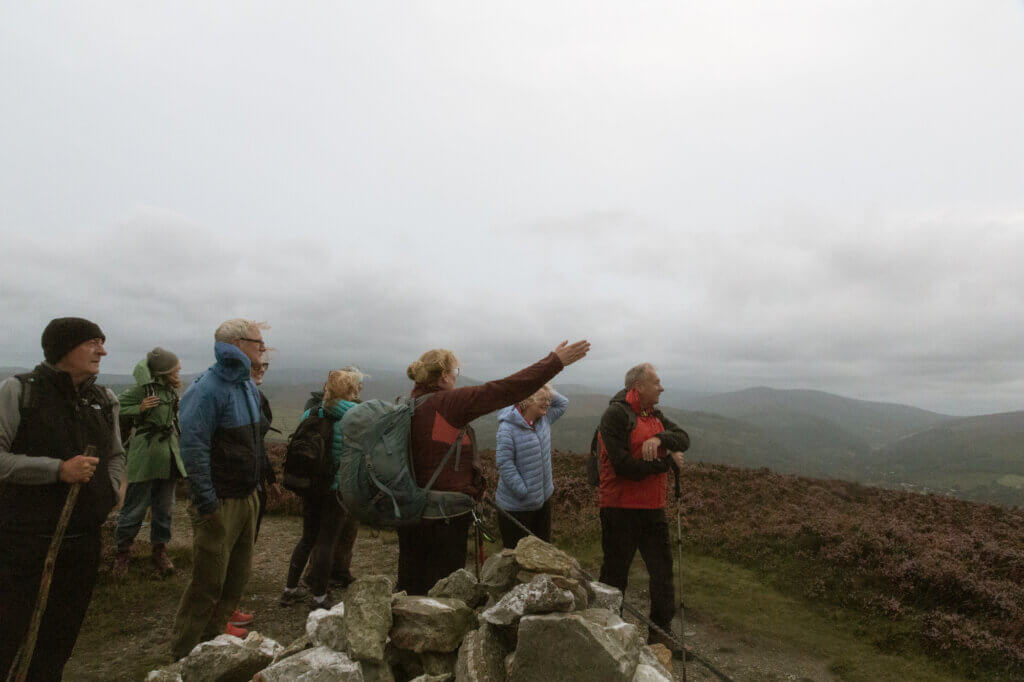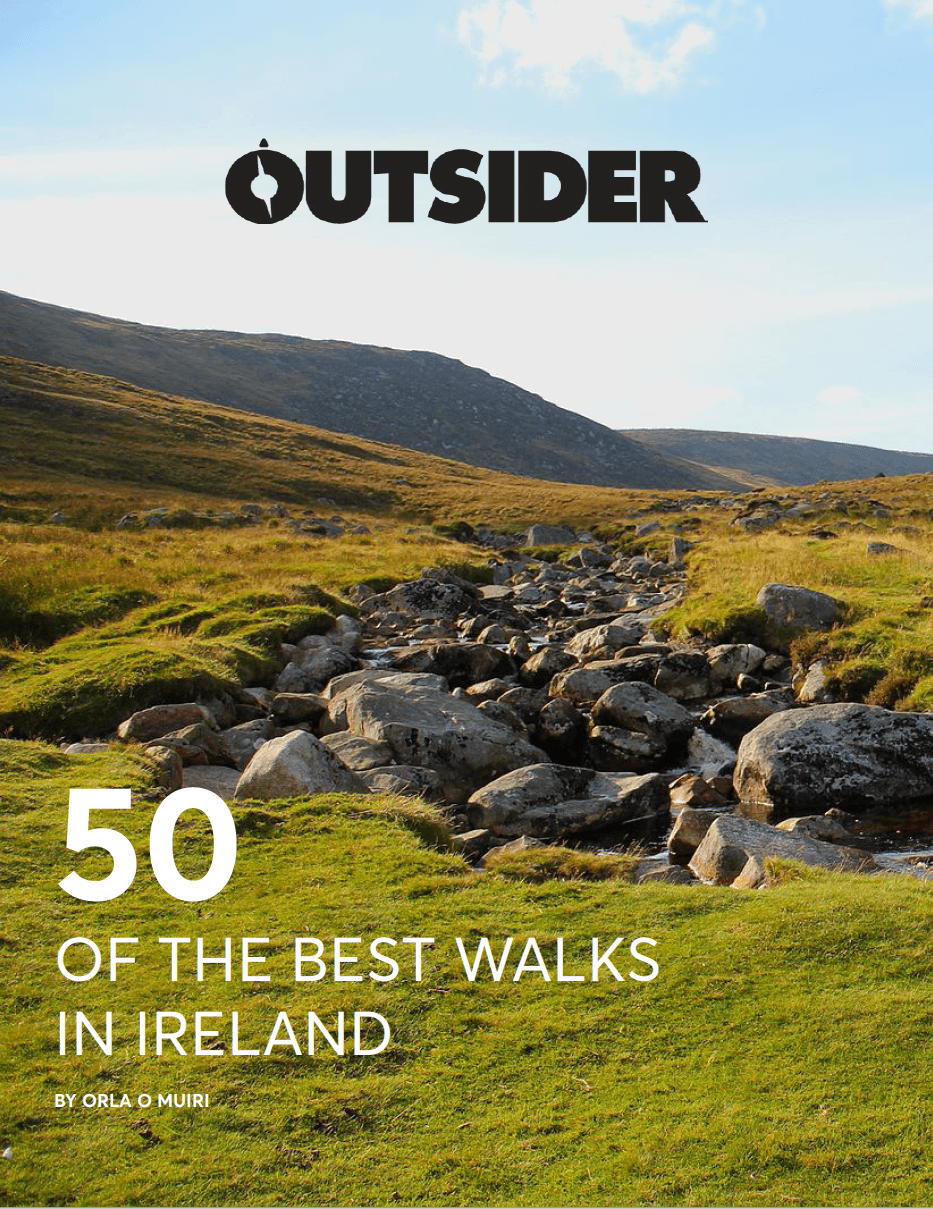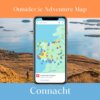Autumn is here. The days are shorter and cooler but don’t let that keep you inside. There is no reason why, with the right kit, your summer hiking habit couldn’t transform into a year-round way of life.
There are a few things you need to consider regarding your outdoor gear when the leaves begin to change. You don’t necessarily need to go and buy a whole new set of gear, but you may need to replace a few things.
This is not designed to be an exhaustive kit list for your next hike but more a guide on how to think about your kit choices as we transition into the colder months.
Footwear
Inappropriate footwear choices cause the vast majority of mountain rescue team call-outs. Having the right footwear for the route you are taking on is vitally important. There are two main characteristics of footwear that need to be taken into consideration:

- Grip – Grip comes from the outsole on the shoe. The “grippiness” of the shoe is a result of both the outsole layout and the rubber that is used. Having good grip is very important on muddy, steep terrain.
- Support – Support comes from the build of the shoe. The supportiveness of the shoe is a result of the rigidity of the sole and the height of the boot. Having good support is very important on uneven, loose terrain
Mountain Boots
Mountain boots are generally very supportive and moderately grippy. This makes them an excellent choice for hikes where you intend to venture off-trail. People who are doing mountain skills workshops or are doing some navigation in the mountains should consider getting some mountain boots. The other aspect to these shoes that makes them an excellent choice for autumn and winter is the higher ankle collar. This protects you from rocks, debris and water.
Our top recommendations:
Salewa Mountain Trainer Womens
Mid-Boots
Mid-Boots or Mids are widely considered to be a “best of both” category. They get their name from the ankle collar being mid-way between a boot and a shoe. They are generally softer underfoot while maintaining some good support. This makes them perfect for long days on the trails of Ireland. They are often lighter than mountain boots but maintain adequate protection from rocks and moisture.
Our top recommendations:
Trail Shoes
Trail shoes are designed to be used exclusively on trails. Because of this they are lightweight and provide much less support compared with their high-collared counterparts. If you are sticking to well-worn trails or plan to embark on a few lightweight trail runs this autumn a trail shoe is a perfect option.
Our top recommendations:
WOMEN’S ULTRA 100 RUNNING SHOE
Insulation
Insulation is about so much more than staying warm, it’s about being comfortable no matter the conditions. The weather in autumn in Ireland can be extremely varied. The temperature can sway from below freezing to teens and mild in one day. Having the right kit to remain comfortable in these diverse conditions is important. Being comfortable starts with your baselayer (the wickinglayer directly on your skin) but more on that later. First, let’s talk about your outer layer. Outer insulation layers come in 2 main varieties:
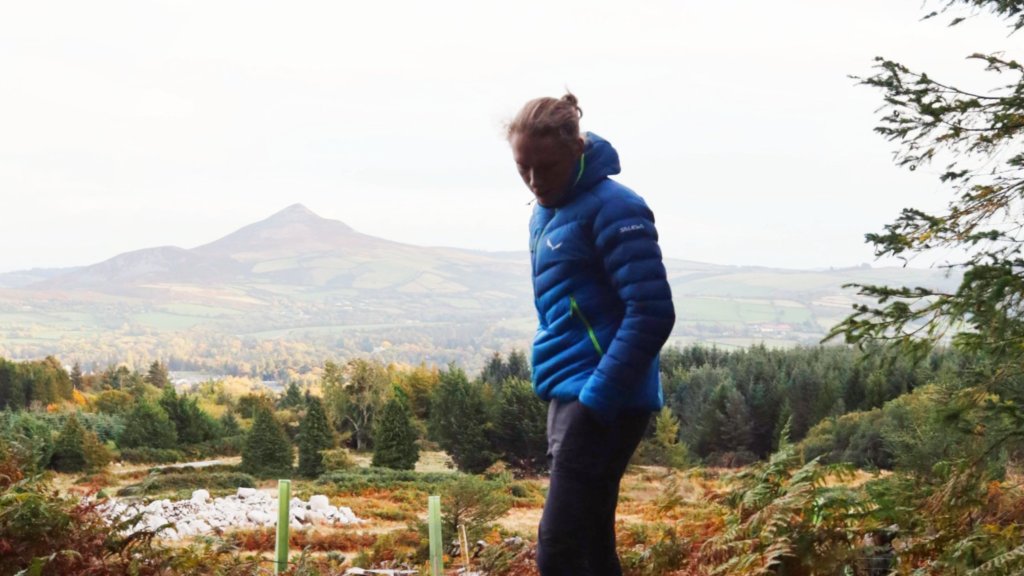
- Lofted Insulation – comprised of either a down feather or a synthetic fibre, lofted installation works by trapping air in between its fibres thus keeping your body’s natural warmth close to you. Lasted installation is generally warmer making it a good option for colder days or slower activities.
- Fabric Insulation – fabric installation works similarly, but on a smaller scale. It traps air inside the layer and keeps you warm. Generally, fabric insulation is more breathable making it good for mild days or faster more active activities.
Our top recommendations:
Microlight Down Jacket – Black
Arctic Crest™ Down Jacket – Black
Labyrinth Loop™ II Hooded Jacket
Spur Outdoors: A Sustainable Outdoor Clothing Choice
Waterproofs
When it comes to waterproof jackets we like to simplify the market by thinking about the “3 Fs of waterproof jackets”
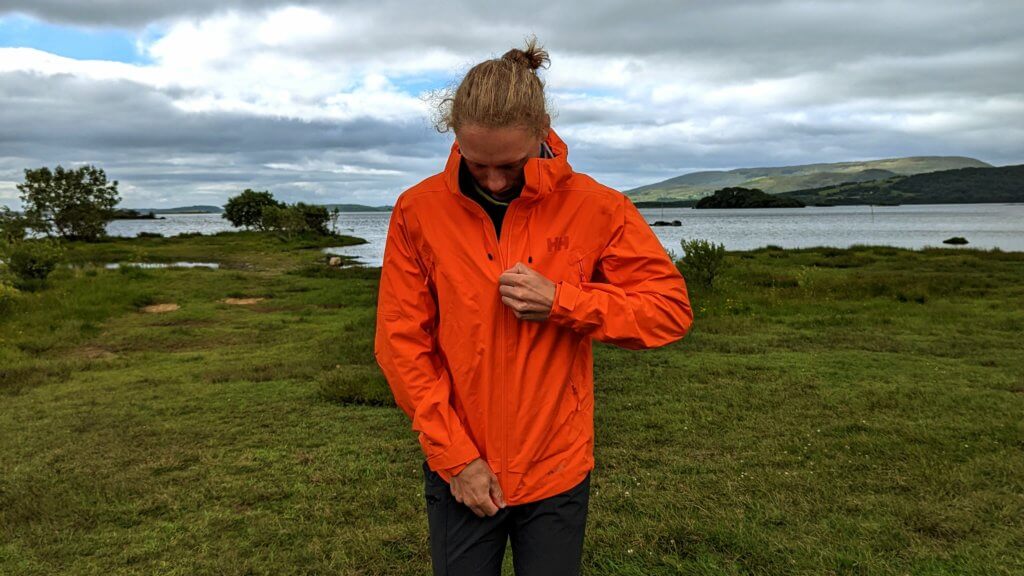
- Fabric: The fabric your jacket is made from is perhaps the biggest consideration when it comes to waterproof jackets.
- Fit: Fit is so much more than size. Some jackets fit tighter others looser to accommodate layering and some come lower than others. Picking the right fit for your activity is vital. For “high output activities” such as trail running, lightweight hiking, climbing or cycling a tighter “active fit” is generally preferred. For “medium to low output activities” like camping, hiking, bird watching, fishing or similar, a looser “comfort fit” is generally preferred.
- Features: What separates a good jacket from a great jacket is the feature set of the jacket. What features should you look out for? This will depend on the intended use of your jacket. Here is a list of features we often look for in a hiking/mountaineering jacket.
Raised pockets allow you to wear a harness or backpack without limiting pocket access.
Longer sleeves keep your wrists covered when scrambling or using poles. This minimizes the chance of water coming down your sleeve.
Bottom zips let you access the pockets of your insulation layer. In mountaineering it also allows you to get the jacket out of your way when belaying.
Adjustable hoods keep the hood snug to your head even in stormy conditions.
Stiff-brimmed hoods keep the rain out of your eyes.
Our top recommendations:
Zirkulu Endurance Shell Jacket
Women’s Puez Aqua 3 PTX Jacket
Men’s Ampli-Dry II Shell Jacket
MEN’S OUTDRY EXTREME WYLDWOOD SHELL
Baselayers
Quite possibly the most important category of outdoor gear is your baselayer. This is the layer that is directly on your skin. This means it has the biggest job to do when it comes to assisting your body’s natural thermoregulation. The baselayer’s job is to wick sweat without holding onto it which would cool you down. There are a few different types of baselayers that achieve this difficult task.

- Synthetic baselayers are the “entry-level option” however this doesn’t mean they don’t perform. Synthetic baselayers are generally more suited to “high output activities” due to their warmth-to-wicking ratio.
- Wool baselayers are the gold standard for hiking in Ireland. They are incredibly wicking and very warm for their weight. They also perform when wet and are naturally antimicrobial which means they do not smell as much as synthetic baselayers, even after numerous days of use. This makes them the ideal option for multi-day trips.
- Blended baselayers provide the best of both options.
Our top recommendations:
Puez Dry Women’s Short Sleeve V-Neck Tee
Women’s 175 Everyday L/S Crewe
Men’s Rho Heavyweight Zip Neck
Chairs
You might not think that a camp chair is an “autumn essential” but let us explain why it is. Heavy, cumbersome, and flimsy are words that have historically been associated with campchairs. No longer. Helinox has revolutionised the outdoor furniture industry by creating lightweight, portable, compact, durable furniture.
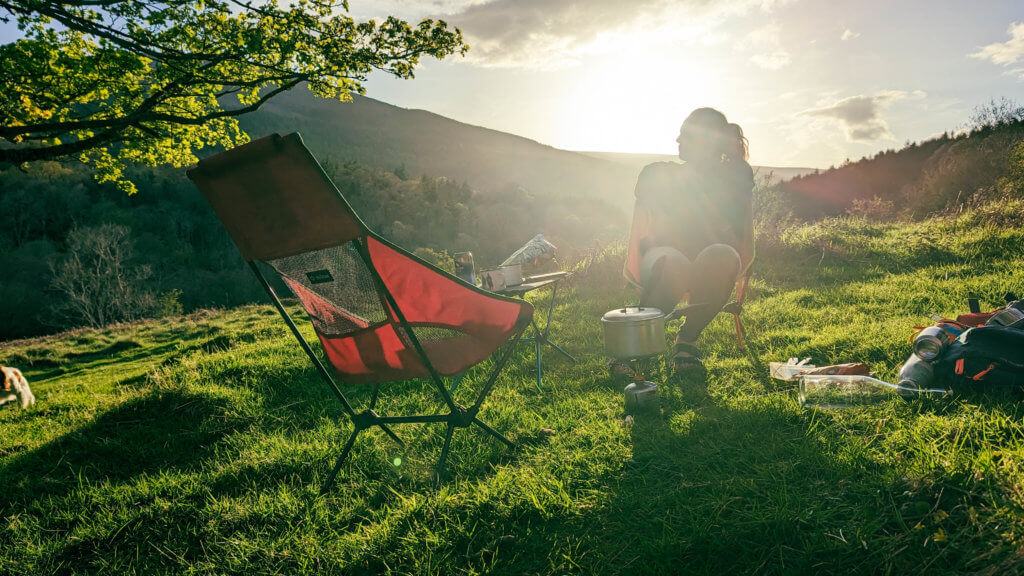
Have you ever been on a casual hike or camp and had to sit on a rock or bit of wet moss to enjoy your lunch? We all have. That is exactly where Helinox comes in. What about the weight? The Helinox Ground Chair weighs only 650g, comparable to a hillwalking rain jacket and packs up smaller than one. The Helinox Chair One is a bit heavier (960g) but raises you higher off the ground and provides a more upright seat. Perfect for camping.
Our top recommendations:
Pants
Hiking pants are a vital bit of kit, especially in Ireland where the weather we experience while hiking in autumn can be so changeable. Having a flexible, durable pair of softshell hiking pants is very important. What is “softshell”? Softshell is a technical fabric that is wind-resistant, water-resistant, and super stretchy making it perfect for hiking trousers.
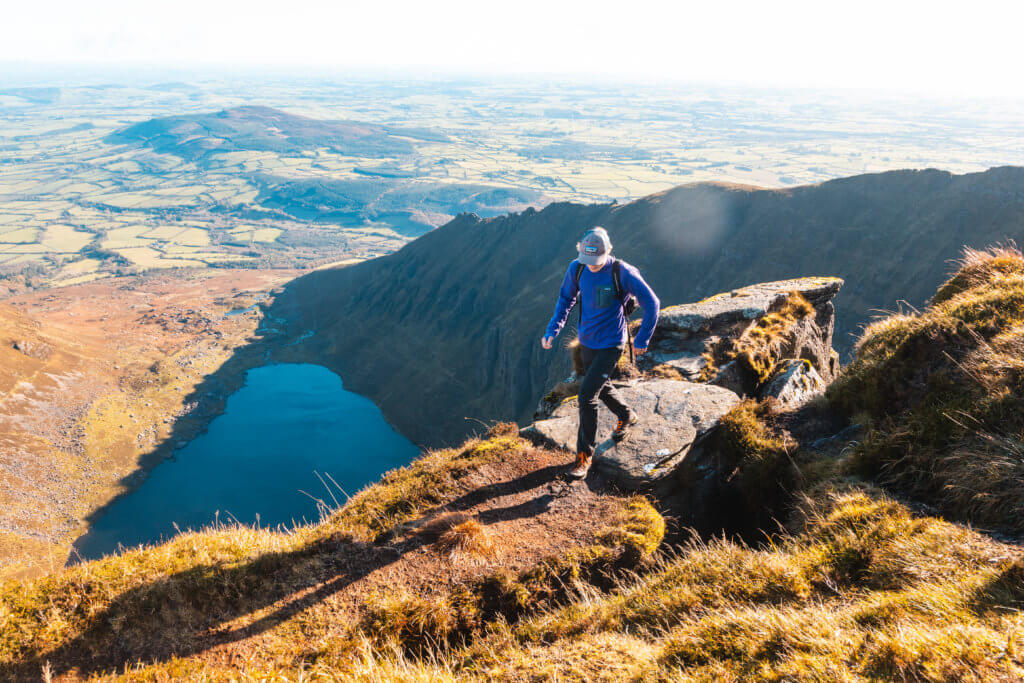
Our top recommendations:
Men’s Puez Dolomitic 2 DST Pants Black
Runbold Winter SO Pants – Black
Mountain Equipment Women’s Sonica Tights
Packs
Having a comfortable backpack to carry all of your autumn essentials is of course super important. The backpack that you will choose depends on the autumn weather conditions the length of your hike/trip and the activity you will be participating in. Let us explain
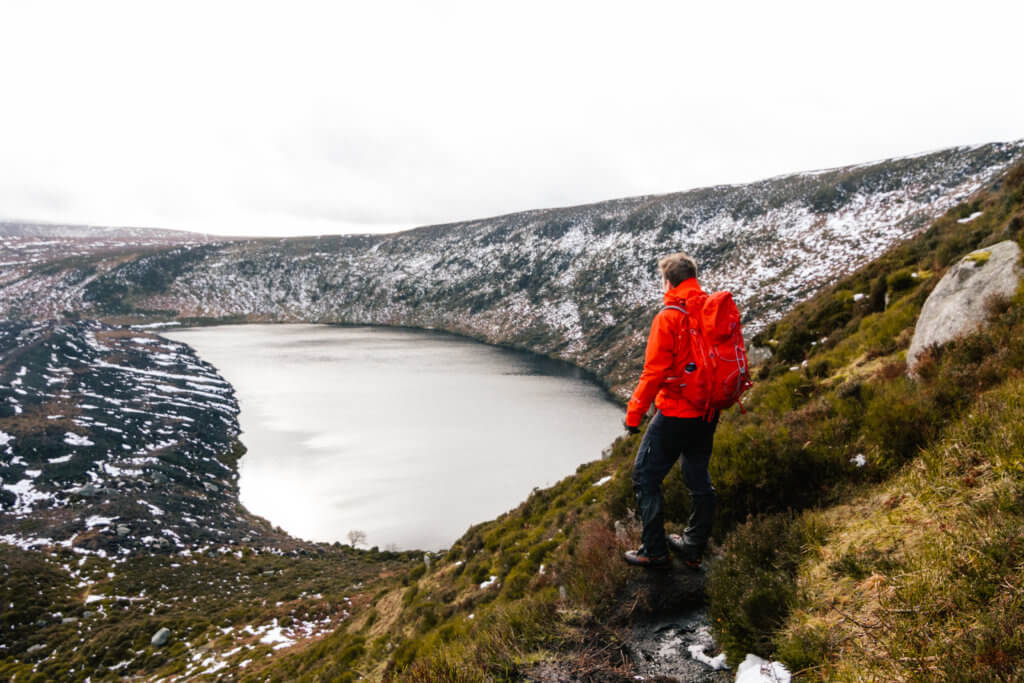
- Capacity is an obvious part of your decision-making when it comes to backpack selection. The bigger the bag the bigger the trip is generally the rule. However, we have fallen into the trap many times of selecting a bag for a trip and then filling it regardless of if we need to or not. On occasion restricting yourself to a smaller bag will ensure you bring only the essentials with you and aren’t carrying an unnecessarily heavy load.
- Fit is an important consideration for packs too. If you are going to be running or moving fast you will need a different style of bag than if you are hiking or rock climbing for example.
Our top recommendations:
Osprey Womens Tempest Velocity 30 – Pashmina/Melon
Headwear
While the old saying “you lose 80% of your heat through your head” may not be totally accurate, you certainly can regulate your temperature based on your choice of headwear.
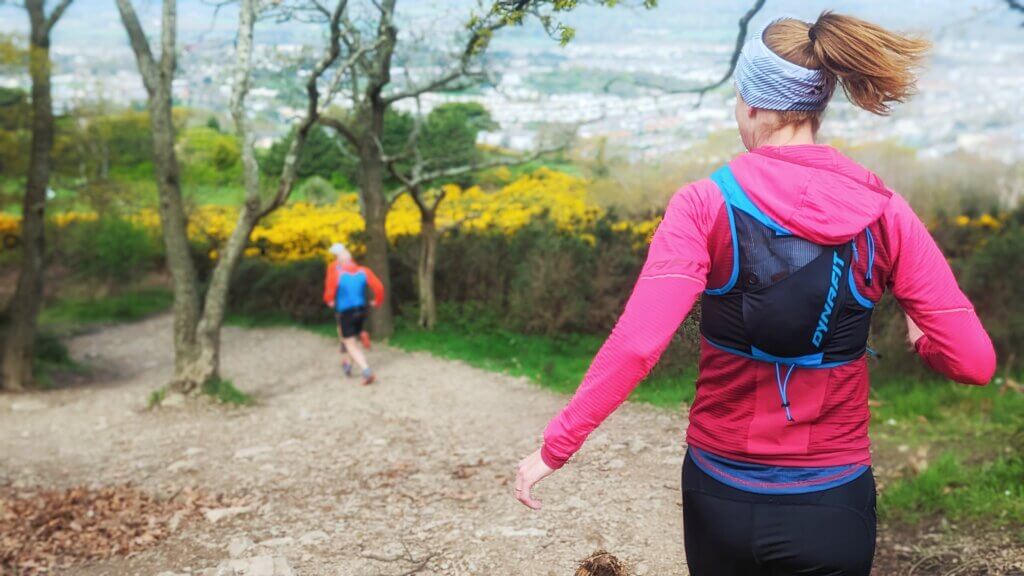
Our top recommendations:
Accessories
Our top recommendations:
Relevant gear reviews



